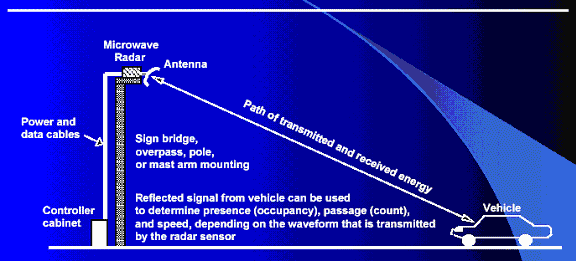HOW RADAR WORKS?
HOW RADAR OPERATES?

Radar is an acronym for radio detection and ranging as these were primary functions during the early use of radar. Radars can also measure other target properties such as range rate (Doppler), angular location, amplitude statistics, and polarization scattering matrix.
In its simplest form, a radar propagates a pulse from an antenna to a target. The target reflects the pulse in many directions with some of the energy back scattered toward the radar. The radar return is received by the radar and subjected to processing to allow its detection.
Since the pulse travels at approximately the speed of light, the distance to the target can be determined based on the round trip time delay. Reflections from undesired targets are known as clutter and often include terrain, rain, man-made objects, etc.
Usually, the radar will have a narrow beam so that the angular location of the target (i.e., azimuth and elevation) can also be determined by some technique such as locating the centroid of the target returns as the beam scans across the target or by comparing the signals received simultaneously or sequentially by different antenna patterns or overlapped beams.
The radial velocity of the target can be determined by differencing the range measurements. Since the range measurements may not be very accurate, better range rate accuracy can be obtained by coherently measuring the Doppler frequency; that is, phase change from pulse-to-pulse in a given range cell.
At microwave frequencies, the wavelength is quite small and, hence, small changes in range are readily detected. Generally, frequency is measured by using a pulse Doppler filter bank, pulse pair processing, or a CW frequency discriminator.
Coherently measuring the frequency is also a good way for filtering moving targets from stationary or slowly moving clutter. Radar parameters vary with the type of radar. Typically, the radar transmitted pulse width is 1 to 100 μs with a pulse repetition frequency (prf) of 200 Hz –10 KHz.
If the antenna is a mechanically rotated reflector, it generally rotates 360◦ in azimuth at about 12–15 r/min. If the two-way time delay is T, the range to the target is R = 0.5T × c, where c = 3 × 108 m/s is the velocity of light.
No comments:
Post a Comment